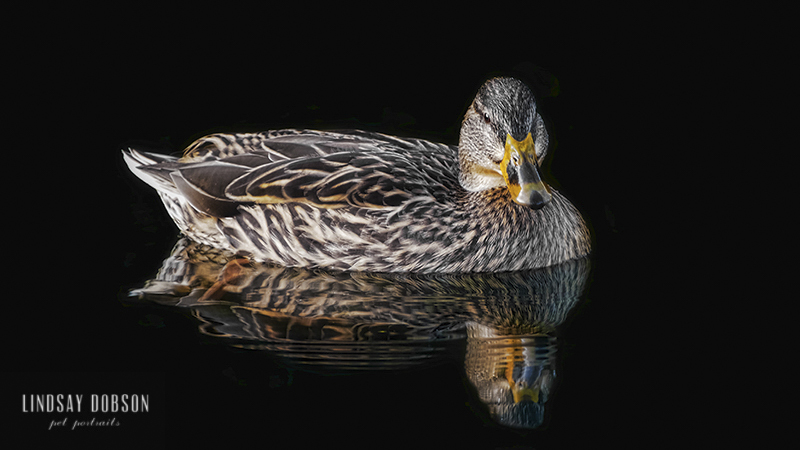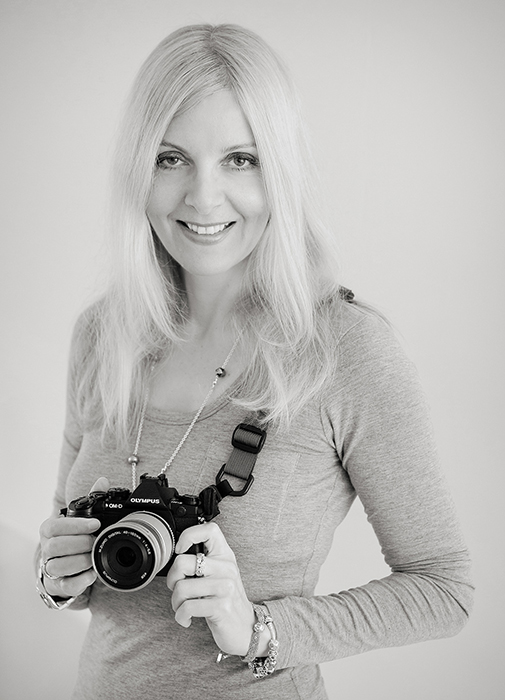Welcome to our series of 100 interviews we will be holding with professional photographers who use mirrorless cameras for work! “Switching to a smaller and lighter system” has become somewhat of a buzz phrase as of late, but many working photographers take this philosophy seriously. From medical reasons such as resolving back and shoulder pain to the simple realisation that bigger does not mean better, photographers are turning to mirrorless systems now more than ever before.
This week’s interview is with Lindsay Dobson, a UK-based environmental portrait photographer who specialises in animals and people. She has won numerous recognised industry medals and accreditations for her animal and nature photography, and gained the title of SWPP and BPPA (The Societies) Photographer Of The Year for Pet Portraiture.
Visit Lindsay’s photography website
Follow Lindsay on Facebook
All the images contained in this article are property of Lindsay Dobson and may not be reproduced in any way.
1. Who is ‘Lindsay Dobson’ in three simple sentences?
I’m an environmental portrait photographer based on England’s Sussex coast. I work on location and I specialise in people portraiture and animal portraiture. I’m a Fellow of the British Institute of Professional Photography and The Societies and part of my role involves the training and development of new photographers.
2. You’ve made your living as an animal and pet portrait photographer. What drew you to this genre of photography in the first place?
From 2000 I spent a few years as a fine art photographer (part time) specialising in still life and botanical studies, but I wanted to develop my photography as a primary income stream. I realised that social photography would be the most viable route. I started with weddings but was soon drawn towards portraiture – finally introducing a dedicated animal photography service five years ago. I did this mostly to bring variety to my work. At the time I didn’t realise how important it would become.
3. How is photographing animal portraits different from shooting human portraits?
Animal photography is intensely challenging at times because we can’t always interact with our subjects as easily as we might with humans. We may well have a concept in our mind but the end result may be very different. Each animal will have its unique forms of behaviour and some are easier to work with than others. As you know, I don’t just photograph normal pets, I create portraits of everything from kept animals to wildlife. An obedience trained dog will be the optimum furry subject if we’re shooting a range of concepts but in reality we may be dealing with animals who are self ruling, timid or nervous, or simply difficult to approach. Yet we still have to find ways to create worthwhile and memorable photographs. Not every photographer will enjoy these challenges, but I do.
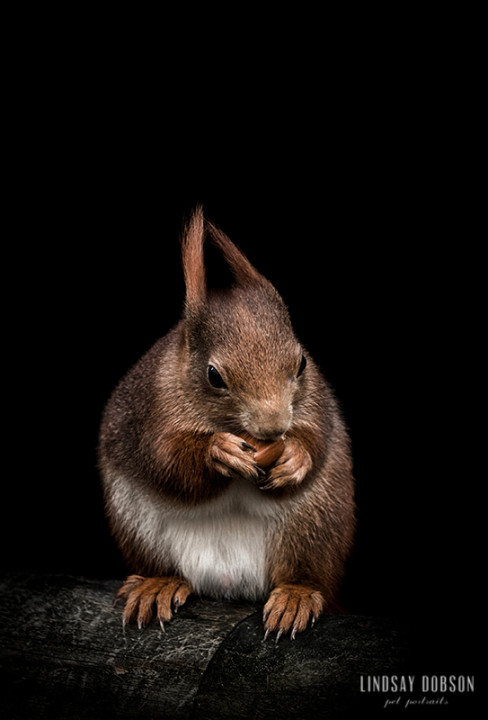
4. How do you go about “bringing out the character” of each animal? Do you use special cues (treats, toys, etc.) or request the assistance of the owners?
Sometimes it’s a combination of all of those things, at least where dogs and cats are concerned. An important precursor to any animal photography shoot will be an in-depth discussion with the owner or handler. This helps us to prepare for the session and also to prime the owner who will very likely play a part. We’ll talk about the animal’s personality, state of health, and the things it enjoys doing, we’ll plan the locations and we’ll carry out a risk assessment. We always try to work within familiar environments where the animal can be itself and show its usual traits and habits. I ask that only one owner or handler is present because animals can be easily distracted (this is particularly crucial when I’m working through the candid photographs, which will often yield the most interesting and characterful results). It can be fairly easy to get an animal’s attention – but holding that attention can be difficult!
If I’m dealing with a wild animal, or an animal in a sanctuary, I’ll need to know a bit about the breed characteristics and behaviour. It’s very important to me that those characteristics come through in the photographs – I’m not looking to create bland snapshots but rather a narrative of how that creature might behave. For example, when photographing a red squirrel I’ll want to capture the essence of what these little animals might do each day, this might involve a very traditional image involving a hazelnut and the typical stance of the animal whilst eating.
Character is not necessarily defined by habits but may instead reflect the animal’s shape and form. Not every animal is capable of a variety of facial expressions or movements so sometimes we need to look for more graphic images where we concentrate on its body and particularly the position of the head.
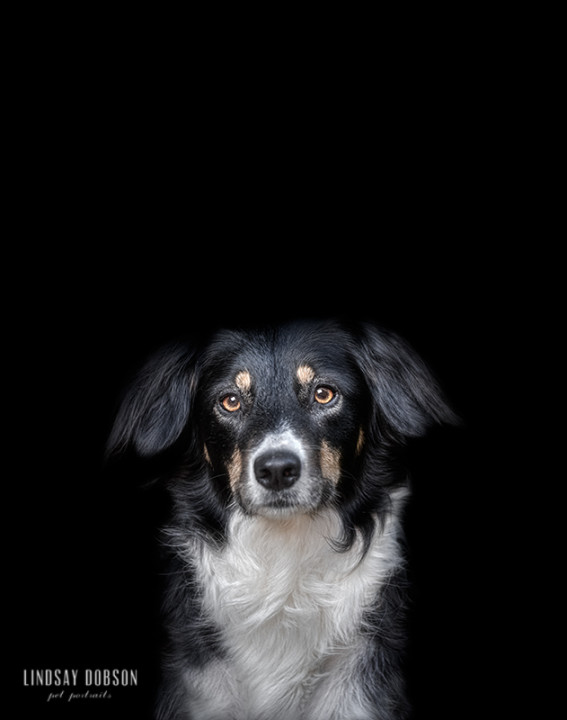
5. What steps do you go through in preparation for a pet/animal shoot?
Aside from discussing the animal with its owner (or learning a little about the behaviour of wild or semi-domestic breeds) I’ll simply approach the shoot with an open mind. Normally I’ll do what I do with my human subjects – I’ll set out to gain a range of images from classic head shots to wider environmental photographs if the location is interesting or pictorial. I’ll pack three Micro 4/3 bodies, four lenses, and a flashgun. I’ll be armed with antibacterial wipes and a couple of lens cloths because curious animals will often stick their noses against the glass. Old clothing is a prerequisite and stout footwear because I might be on my feet for several hours. Once I arrive there is every chance I’ve never been to that location before so I’ll allow some time for reconnaissance. I’ll be looking for pleasing backgrounds and good natural light. I will often use completely plain backgrounds such as interior walls or natural backdrops such as foliage.
My style tends to be fairly simple and I rarely use props or artificial environments.
If I’m photographing wild animals then it’s a case of turning up at a time when the light is pleasing then simply waiting for opportunities to unfold once the best vantage points have been identified. In these cases we’ll have to accept that on some occasions we won’t get any worthwhile images, but on other occasions we might do very well indeed. Perseverance is key.
6. You use the E-M1, E-M5 and E-PL5 for your work. Which roles have you assigned to each camera?
The EM1 will normally carry the Pana 35-100 f2.8 (or the Pana 100-300 if I’m photographing wildlife or very timid creatures). My preference has always been for long zooms when it comes to portraiture. The EM5 will usually have the Olympus 45 f1.8 attached, because this is a superlative portrait lens and it’s ideal if light levels start to fall. The EPL5 is fantastic because it’s very small and takes up so little room in my camera bag, particularly with a wider prime lens attached for the broader environmental images. I normally have an accessory viewfinder attached to the EPL5.
A couple of days ago we received an EM10 so I’m looking forward to putting that through its paces over the coming weeks – I think this is a particularly exciting camera as it appears to have borrowed the best features from the current OMD range.
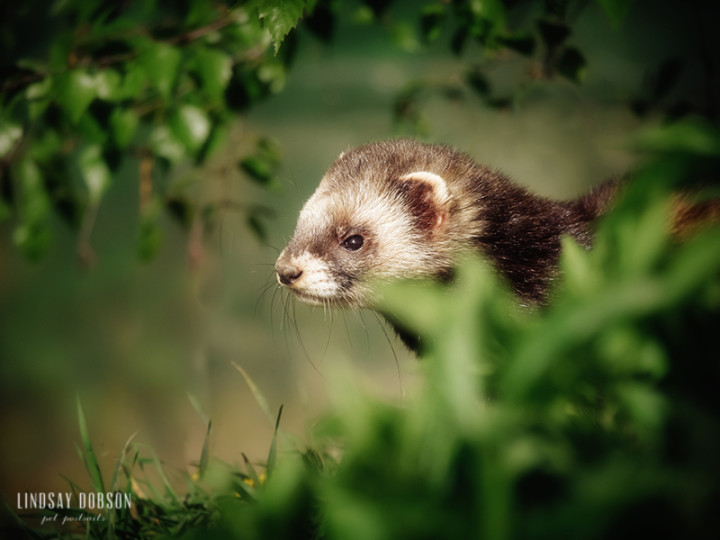
7. Why did you choose the Olympus Micro Four Thirds series for your work? Which lenses would you recommend to a budding pet photographer?
A few years ago I started to suffer from physical problems resulting from a heavy workload – in particular joint pains in my hands, arms, and neck. This was so bad at times that I was facing a career limiting if not career ending situation. I’d heard about the new Olympus EM5 but my earlier experiences of Micro 4/3 were still fresh in my mind and I found it hard to believe that the system had evolved significantly. In an act of desperation I ordered an EM5 and this was a turning point. I remember taking a few idle photographs around the house and garden and staring raptly at the computer screen – the IQ was superb and the speed and functionality of the system was impressive to say the least. I knew I’d be able to carry on my work as a photographer, and this was reinforced over the coming months as I started to use the camera professionally. Even if I hadn’t developed injuries, I would still have swapped to Micro 4/3 – it makes my photography so much easier and more enjoyable.
In terms of lenses, I tend to use the focal lengths I became accustomed to over the years with my Canon full frame system. For example, my Canon 70-200 f2.8 L was my favourite lens for portraits and this is well represented by the Panasonic 35-100 f2.8. With my full frame equipment I would normally be shooting at around F5 .6 anyway for portraits, so the depth of field difference was not significant. For wildlife either the Panasonic 100-300 or the Olympus 75-300 are ideal, giving us a whopping 600 mm equivalent 35mm terms. If you’re on a budget then the Olympus 40-150R is a gem, it’s a must-have lens in my opinion. Considering how small and lightweight these lenses are, that’s pretty incredible when you consider how large and heavy (not to mention expensive) a full frame equivalent might be.
I also use prime lenses in my portraiture and you really can’t beat the Olympus 45 f1.8, the Olympus 25 f1.8 and the 17 f1.8.
8. If you had to recommend three must-have accessories for your Olympus cameras, what would they be?
I absolutely love my DSPTCH camera straps, they’re so soft, strong and comfortable and take up hardly any space, as well as looking good. I have them in several colours. I also have leather half cases on my EM5 and EPL5 which helps to protect the bottom edges of the cameras from scratching. Camera bags are personal choice but I have several bags from my two favourite ranges, Billingham and Kelly Moore – these cover me for every situation from discrete fieldwork to formal dress-up events.
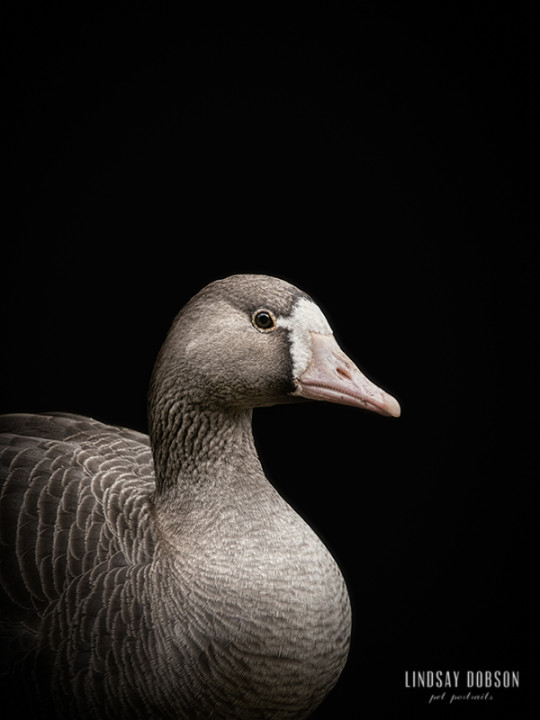
9. Is there any particular feature you find extremely useful for pet photography on the flagship E-M1?
It’s hard to know where to start – this camera has pretty much everything a photographer could want! But for me, it’s absolutely crucial that I have extremely fast and accurate autofocus. I rarely work within controlled conditions, even my family portraiture is mostly dynamic requiring quick reactions to capture fleeting moments. The speed and responsiveness of the OMD line is hard to beat and the EM1 has continued to build on this. I also print fairly big so naturally good IQ is a prerequisite.
10. What has been your most challenging pet shoot so far? How did you overcome the difficulties?
I would say that most pet shoots have a lot of challenges and it’s quite hard to pinpoint any which have been particularly memorable for this reason. But I will say that photographing cats can put your inventiveness to the test. I remember one particular cat, a lovely little character with a playful and affectionate nature, but she had the energy of a basketball player. Most of my cat photography will take place indoors (at least to begin with) because it’s all too easy for the animal to wander off if we go outside first, so I’ll be working in darker conditions and often enclosed environments. I might spot an ideal location to create a portrait, but getting a cat to stay in one place isn’t always easy. Sometimes we just have to try to anticipate what the animal will do whilst ensuring we’re in the right place to capture the moment. Going back to the cat I just mentioned, no matter where I placed myself, she would run into my arms. It became a question of playing until her energy went downhill, but this didn’t happen either. Eventually I was able to hide on the stairs while she stalked me on the landing, peering through the banister spindles. I bounced a speed light behind me into the ceiling to get a high key look. The PL25 or Oly 25 is ideal for this kind of thing.
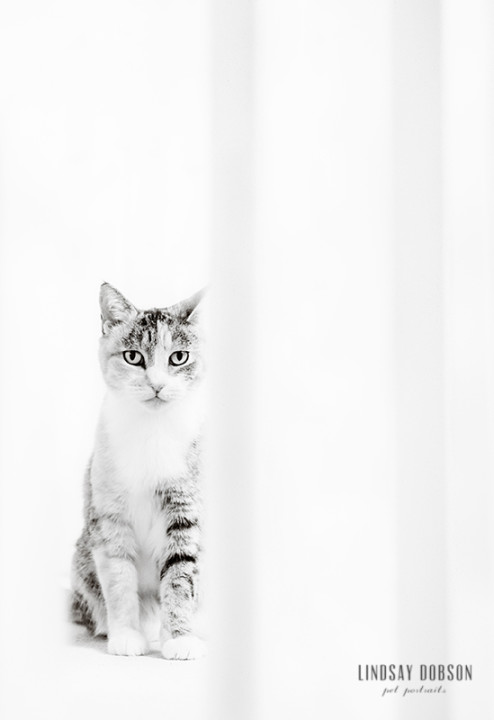
11. You gained the title of BPPA and SWPP Pet Photographer of the Year in January 2012. Why do you think your pet work stands out from the rest?
When we get to the level of the big industry competitions we have just moments to impress the judges, who might be trawling through thousands of entries from the year. We know that the judges expect a high level of technical skill, but we also have to create images with impact. Without impact you can pretty much forget about winning the bigger awards. A head shot is usually risky because we have no environment with which to add information to the viewer. I therefore had to rely on shape and breed character, and a carefully executed monochrome process.
12. Along with your classic service, you also provide a Fine Art animal portraiture service. What additional steps do you take to turn an animal portrait into a fine art print? Could you give us some insight into your post-processing workflow for this kind of photography?
If a client expresses an interest in a fine art study then we need certain conditions on location. Specifically, I’m usually looking for a dark background or at least one which creates tonal separation from the animal. This is not difficult to achieve with digital technology due to light falloff (the inverse square rule) so we can simply place our subject in open shade with soft frontal or sidelight which will drop off rapidly into darkness behind the animal (given sufficient distance between the animal and the background). Doorways and other openings are good for this, particularly garages and barns. During the processing stage I will often need to clean up the background and I’ll then look at pulling detail from the subject, specifically the hair and eyes. I usually do this by making small selective Curve adjustments.
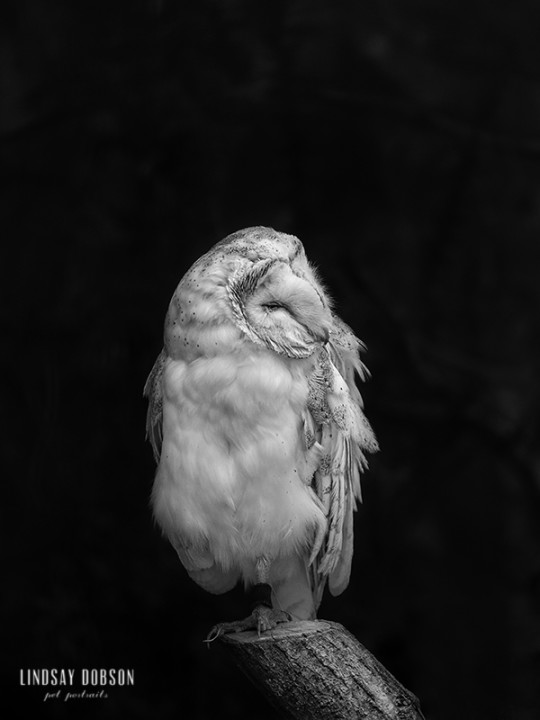
13. Next to animal and pet photography, what is your second favourite genre and why?
As a portrait photographer my animal portraiture and human portraiture runs side-by-side and I’d say there is broadly an equal split. But I’m a great believer in expanding one’s horizons as far as possible – that can be fantastic for honing your eye and your compositional skills. Once I switched to Micro 4/3 cameras it suddenly became very easy to take on personal projects, or to at least have a camera with me pretty much every time I leave the house. This opened up a whole new world of photographic freedom and I frequently engage in street photography and seascapes. In fact this is the route by which I’ll gather many of my competition images across multiple genres, so it has real value. There’s no way I could do this if I were using my full frame equipment – there’s simply too much to carry comfortably and I would be far too conspicuous for comfort!
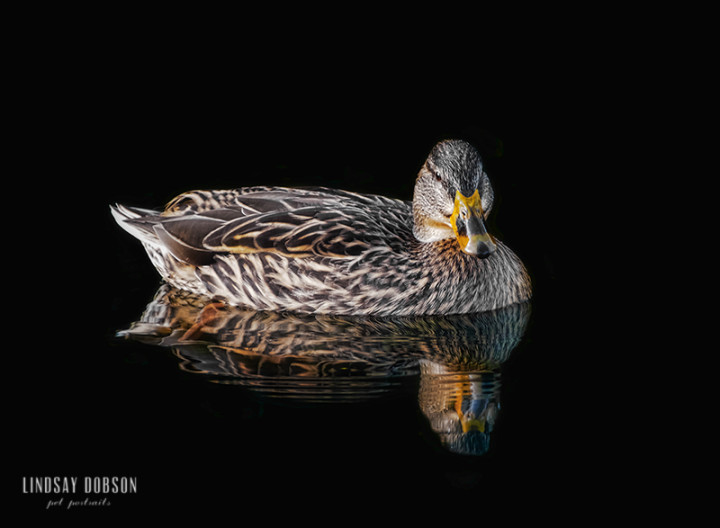
14. There are many great compact systems out there at the moment. If you hadn’t chosen to go down the Olympus route, would you have chosen another mirrorless system? Which one and why?
For the work I do, there is currently no viable alternative (with the exception of the latest Panasonic bodies). I have very specific needs and that includes a very high quality lens ecosystem from fast wide primes right through to extreme telephoto lenses. I also need very fast autofocus because a lot of my work needs to happen quickly and intuitively. My Olympus system meets my needs perfectly and I have never been let down in the field or on assignment.
15. Do you think mirrorless cameras will eventually replace the DSLR as the professional’s primary work system?
Given the incredible advances in the mirrorless arena I think it is reasonable to suppose that these will gradually become the first choice for many professionals. More and more photographers are getting completely fed up with the size and weight of DSLR systems. In just two years I have seen an almost polar shift in attitudes within the professional community and there are now some pretty big names serving their clients very happily with these cameras. At one time photographers were concerned that their clients might not respect them if they turned up with a small (and fairly affordable) camera system, but I think those days are behind us. After all, our clients are hiring us on the strength of our portfolio, vision, and customer service.
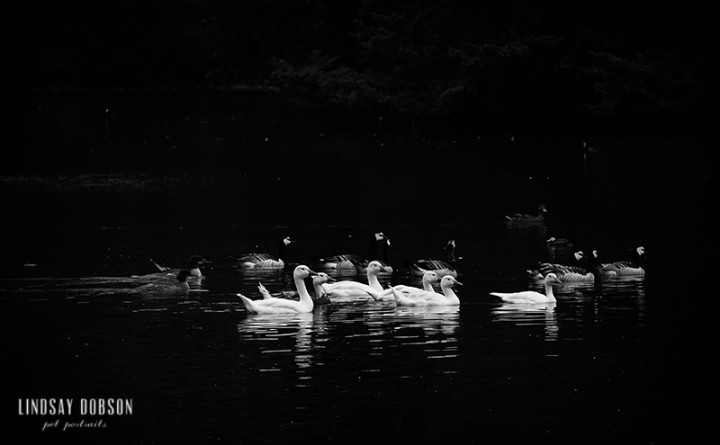
Have any questions for Lindsay about her pet/animal images or her Olympus cameras? Be sure to leave her a comment below and visit her website to see more of her amazing work!
